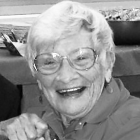
Mary Anne Zak
Lithe, limber and apparently youthful, five or six white-robed and hooded figures distributed flyers at Suffield center one afternoon about 40 years ago. Assuming the handouts conveyed Ku Klux Klan information, I also assumed the distributors were high school students, some possibly mine.
Attitudes, grooming and attire of some students had recently exhibited interest in Nazism. Students periodically went through phases, joining nationwide fads in clothing, grooming, music, or behaviors. Judiciously managed on school grounds by our principal, the phases usually passed.
Nazism did not pass but grew nationwide. The Southern Poverty Law Center has mapped the location of 917 Nazi organizations in the United States, calling them Hate Groups. That designation terrifies and desolates equally with hooded violence.
Violence in Charlottesville on the weekend of August 11 and 12 showed Nazism advocating White Supremacy, a master race of white people led by a dictator. In WWII, 407, 300 American military personnel died to prevent Nazism’s taking over the world.
In the 1980’s white- robed and hooded figures were not Suffield’s first sign of discrimination. Cross- burnings had occurred sixty years earlier after some residents joined the Ku Klux Klan .
Small crosses were burned in West Suffield in 1925 at the homes of three Catholics. Flapping her apron, a feisty housewife shooed away one perpetrator.
A more dramatic demonstration was reported in the Windsor Locks Journal of April 22, 1927:
“On a large hill overlooking Main Street on property owned by the new Suffield Country Club, a large cross wrapped in burlap was ignited about 9 o’clock Monday, the first Klan demonstration to take place in Suffield. The cross was about 12 feet high. No one was seen to leave the hill or the vicinity after it was lighted. There was no other Klan demonstration.”
Discrimination participated in Suffield history from the beginning. Tragically, early discrimination was basically religious, inherited from centuries of European strife.
Colonial and federal period worship groups conflicted dramatically. When an early Baptist organization set a date to raise its meetinghouse, members arrived at the building site to discover the timber gone and the hardware in nearby wells.
When another church organization placed a memorial boulder on the town common, a rival congregation produced a satirical rhyme entitled “The Pebble on the Green.”
Discrimination acquired ethnic dimensions when newcomers began arriving from various nations. Early Irish were told by Boston’s Cotton Mather to get back in their boats, “… and go home.”
The Irish nonetheless moved in then discriminated against the next newcomers who discriminated against the next newcomers who discriminated against the next newcomers who will later discriminate against future newcomers.
Thinking discrimination and rushing to deadline, I’m conscious of the President of the United States and the media in the next room discriminating on TV.